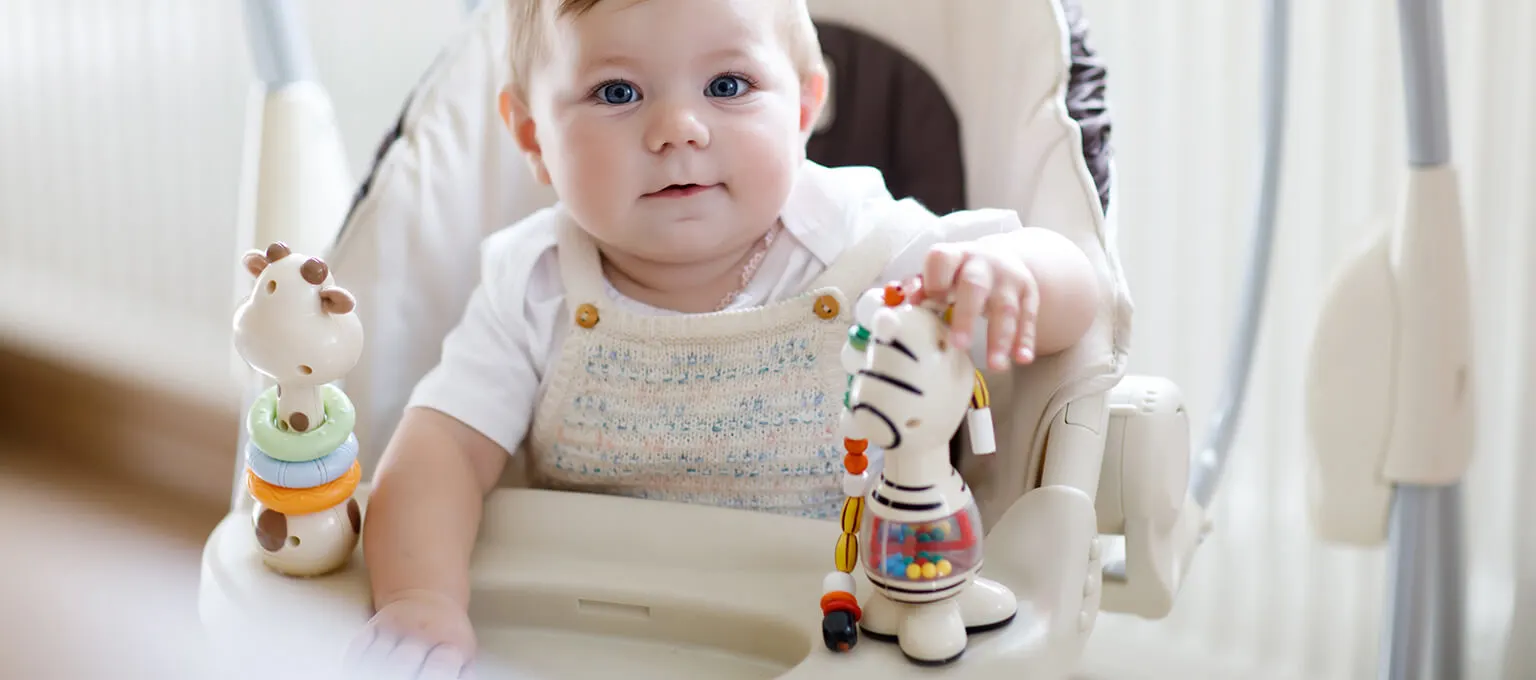Working From Home While Caring for Your Baby or Toddler
If you’re working from home, you might be wondering how you can keep your children entertained while you stay productive yourself.
It is possible to work from home while caring for your little ones, but you may find it helpful to create a rough schedule and plan some fun indoor activities ahead of time so you have the supplies you’ll need on hand. Caring for a child (or children) under 36 months also means you’ll likely get the bulk of your work done in short bursts, so you’ll need to prioritize with this in mind.
To help you juggle both responsibilities, we’ve collated some great tips on working from home while looking after your children. It may feel overwhelming at times but you’ve got this!
How to Stay Productive While Working From Home
Here are some tips for working from home with a child or children under 3 years of age:
Work while your child sleeps. Take advantage of your children’s naps to tackle the most pressing tasks. If your children have a fairly predictable sleep routine, you may be able to knock off important phone calls or focus intensely on a project when they are likely to be snoozing. Working before they wake up or after they go to sleep is another good idea, especially if your job allows this kind of flexibility.
Share the load. If both you and your partner are home, you might like to take turns with one of you feeding or playing with your children while the other gets the chance to work. By taking “shifts,” you can both get things done while your little ones are tended to.
Plan out your day and week as best you can. Schedule when you will wake up and what you will do each day. Having a plan and a list of tasks will help you focus on the most critical items in the face of distractions.
Work while you breastfeed or pump milk. If you pump breast milk, you may like to use a hands-free breast pump so that you can continue with working or a phone call. If you’re breastfeeding your little one, you may be able to take phone calls or read reports as you do.
Dress for work. You may find it helpful to dress professionally so that you feel you are “at work” during work hours, and then change into more casual clothes in the evening. This also helps break up the day and may help you get into the mindset for both work and leisure. On the flipside, you may want to take advantage of the opportunity to work in the comfort of your leggings and T-shirt.
Working while your children play. You may be able to get short bursts of work done while your children occupy themselves. If possible, the kind of work you attempt while your children are up should be the kind that can be interrupted, as your little ones will likely be trying to get your attention.
Take advantage of the weekends. For example, you might like to cook on Saturdays or Sundays so that you have lunches and snacks ready to go for the week ahead. Another good choice for the weekend is to research some indoor activities for your baby or toddler so that you don’t get stuck mid-week.
Remove other distractions. You already have enough on your plate with your little one. If you can, remove other “time-wasters” like social media. There are apps you can use that block your access to social media during work hours, for example. It might also help to schedule half an hour each day for chores so that you’re not constantly wanting to get up and put things away.
Be realistic. You may need to be more flexible in how you work and more creative in how you use the hours you have at your disposal. Don't beat yourself up if you can't do everything, or can't do everything perfectly—no one can! A more reasonable goal for a working parent is to be efficient and productive, which you can do by trying some of the tips in this article.
Take time for yourself, if you can. It’s natural to get cabin fever if you’re working from home for an extended stretch while also caring for your child. If you can, during their daytime nap or once your children are asleep, take some time to do something for yourself like watching a series, having a pampering bath, or doing some exercise.
Read on for specific tips on working with a newborn, older baby, or toddler in the house.
Working at Home With Your Newborn
Your newborn will likely be sleeping in three- to four-hour stretches all through the day, so you may be able to get solid blocks of time to work during her daytime sleep periods. Keep in mind that you’ll also be waking up for feedings, even if you're splitting these with your partner, so be prepared to feel a little groggier during the day.
As you work, you might like to “wear” your newborn in a baby carrier, sling, or wrap so your newborn can enjoy feeling close to you while you get things done.
Although it’s just a nice-to-have extra, a bassinet can be helpful for a work-at-home parent, as it can easily be moved to be right by your desk or table, allowing you to remain close to your newborn as you work.
Of course, if the width of your doorways allows it, you can also move your little one’s crib from room to room. Keep in mind that for your baby’s safety she should sleep only in her crib or bassinet.
Staying Productive While You’re Home With an Older Baby
As your baby will want to be near you, and you'll want to keep an eye on her, place a few toys or an activity center on a play mat or in a playpen that you place right by you. This way you might be able to squeeze in some work while your little one plays next to you.
If your baby enjoys it and you have one, she can also spend short stints in a baby swing, glider, or bouncer. This way, you may be able to have some peace and quiet to work as your baby entertains herself.
Your baby likely has two naps a day—one mid-morning and one mid-afternoon—so take advantage of these opportunities to get some work done.
Working From Home While Caring for Your Toddler
Working from home with a toddler has its upsides and downsides. The positives are that your toddler may be able to entertain herself for short periods and may still take one or two naps a day, during which you can work. The challenge is that when your toddler is up she may want more of your attention.
It’s OK to expect your older toddler to entertain herself for short intervals on occasion. You may need to be firm in telling her she has toys to play with and that for the next 30 minutes she needs to play quietly. To help your child understand the independent play time has an end in sight, consider setting a timer on your phone or microwave. Reassure her once the timer goes off, you’ll be able to take a break and spend some time with her—like play their favorite game or read a few books. Remember, independent play and being able to use her imagination and stave off boredom is an important skill to learn.
To help support her solo play, create a safe space for your toddler to play in. It might be that you thoroughly baby-proof the living room and let your toddler play freely in that area while you work nearby from the kitchen counter or dining room table.
Reward your toddler for playing nicely by herself by praising her and showing interest in what she was up to.
Another option is to get your older toddler set up with her own “workstation” at the other end of the table to you. She could be busy “working” on a drawing, while you’re busy writing emails, for example. You could tell her that she’s a big kid now and that you’ll both be working for 30 minutes before you can take a break together.
Example of a Daily Schedule When Working From Home
Although you’ll need to work out a routine that works for you and your family, here’s a sample of what a day could look like while working from home while caring for your children:
| Early morning | Aim to get your most important work done before your children wake up, as you won’t have many distractions. You might also like to use this time to do some exercise and get ready yourself. |
| Breakfast | Grab some breakfast and feed your little ones. Dress your children and brush their teeth. |
| Mid-morning | Spend some time playing with your little ones. If your children have a morning nap or if your children have periods where they can play alone or together, squeeze in some work. |
| Lunch | Grab a bite to eat and feed your baby or toddler. |
| Afternoon | If your children have an afternoon nap, use this time to make some important phone calls or finish any time-sensitive work. You may like to put aside 30 minutes for the most pressing household chores.
When they are up, spend some time playing with them, but if they are playing solo for short stints, use that time to get some work done. |
| Dinner | Enjoy some quality time with your little ones, have some dinner, and give your children a nice bath and a relaxing bedtime story. |
| Evening | Once your children are asleep, you might be able to squeeze in a few more hours of work. Because this time will be distraction-free, you might like to do the kind of work where you really need to focus. Or you might just like to use this time to respond to any emails you missed during the day.
End the day by having a relaxing shower, reading a book, or by watching a little TV to unwind. |
| Weekend |
• Cook meals and prepare snacks for the coming weekdays • Write a to-do list and create a loose plan for the week ahead • Get some arts and crafts supplies out so you’ll have them on hand • Do some crucial chores like the laundry so you are freer mid-week |
Coping With Tantrums, Fights, and Other Behavior
If you are cooped up with a toddler, or have more than one child in the house, you may encounter issues that make working from home challenging—such as temper tantrums and sibling squabbles (which often lead to temper tantrums). Here are some ways to help curb and possibly even eliminate tantrums and other unwanted behavior:
Avoid saying “no” where possible. You don’t have to give in to every demand, but you can try to deflect certain requests, redirect behavior, or provide an alternative. For example, if your preschooler and toddler want to race around on the hardwood floors that you don’t want scratched, you could encourage them to shift to a carpeted area instead. Of course, if they're doing something unsafe, you should say “No, that’s dangerous” and refocus their attention elsewhere.
Notice good behavior. When your child does something you'd like her to do (especially something that's been difficult in the past), reward her with praise: "You did such a good job brushing your teeth" (or playing with your brother, or picking up your socks). This tactic can go a long way in boosting your child's self-esteem and keeping the atmosphere calm and cheerful.
Say yes to small wins. Go ahead and give in when the stakes aren’t high. For example, if your children want to have breakfast in their PJs, let them. It might also help you conserve some energy to dodge battles about relatively minor things.
Provide options to choose from. When your toddler is given a choice about something, she may be more agreeable about the situation. For instance, if your child doesn't like to get dressed, when you dress her in the morning, you could say, "Do you want to wear the blue shirt or the yellow one?" and let her decide. Offer only two options, though, and always select ones you can live with.
Give a countdown. If something fun is about to end, instead of saying “TV off,” tell your child she has 15 minutes left. Then tell her again when she has 5 minutes to go. Give lots of praise when she does stop on time and does what you’d like at the pre-agreed time. Setting timers works well for this strategy as toddlers often get excited when the timer goes off, which helps deflect their attention away from the activity that’s going to end.
Get a giggle going. If you see your toddler might be on the brink of a meltdown, try to get her to laugh before she starts a tantrum. For example, if your toddler doesn’t want to brush her teeth, start a goofy race to the bathroom and see who can make the silliest noise on the way.
Practice taking turns. To head off a sibling fight over a toy, try to find two toys that both of your children like. Let them play with the toys for a short time (e.g. set a timer), and then have them trade toys. Though it's a little time intensive for you to supervise, this is a good first step in learning to share, a big challenge for most small children.
If you’re new to working from home and caring for your children at the same time, you may be feeling a little overwhelmed. Give yourself time to adjust and figure out what’s most effective for you in terms of routines. With a little trial and error, you’ll soon fall into a groove that works for your family. It might also help to remind yourself about the many positives of working from home, like less time commuting and more time with your family.
Join Pampers Club and get:







